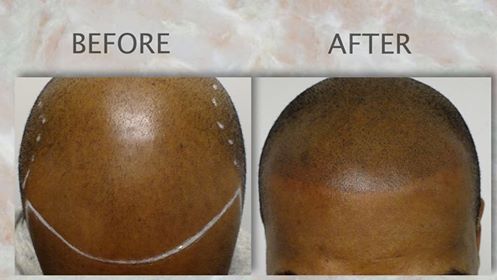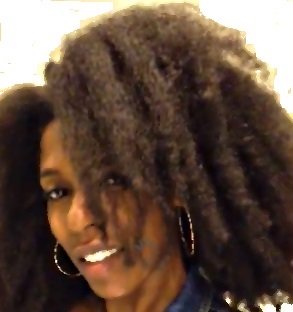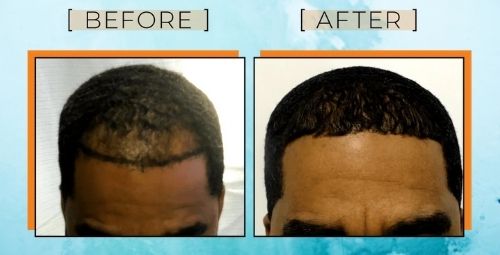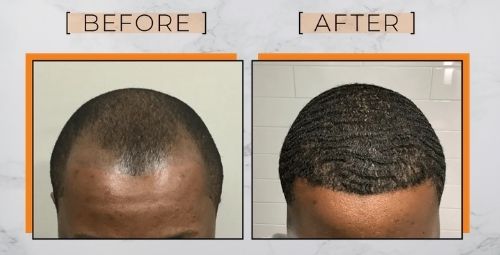Black Men Hair Transplant [Afro-Textured Hair Loss Replacement]
- NHP
- Black Men Hair Care
- Black Men Hair Transplant
The truth about Black men hair transplant procedures is eye-opening. And the Black male hair care options are opening up like the Red Sea.
Many African-American men who suffer from hair loss don’t think they’re good candidates for a hair transplant procedure because of our hair’s distinct kinky-curly characteristics. This long-standing myth is not true.
In fact, the curly character of Afro-textured hair actually gives Black hair transplant patients a surgical advantage: The thick curly nature of the Black hair offers more coverage than straight thin hair. This allows for less hair to be transplanted while still providing sufficient coverage.
So, since the “coil shape” creates the appearance of more hair density, it actually takes fewer hair grafts to achieve visible results on kinky-curly Afro-textured hair.
{RELATED ARTICLE: How long does a man weave last?]
Black Men Hair Transplant Option Differences: FUE vs. FUT
Many hair transplant doctors who specialize in African American hair transplants perform both the FUE and FUT (Strip) transplant method.
The FUE (follicular unit extraction) hair transplant is a minimally invasive method of hair transplantation introduced in the late 90’s and many Black men are turning to this procedure with great success.
Also, the automated FUE transplant method, the newest and most advanced method of hair transplantation for Black men that’s available today is causing a lot of excitement.
Are Fut Or Fue Hair Transplants Better For African-american Hair?
Many hair transplant doctors have decided that the best technique for Black men hair transplantation is the FUE method.
Why?
The linear scar created by the FUT ("strip") transplant technique is extremely challenging to hide in coily Black men’s hair.
The “strip” method or FUT is a surgically invasive procedure. With the “strip” method, the hair at the back of the scalp is cut short. That section of scalp skin is surgically cut off, or excised.
The remaining wound created by the incision is then stitched up or stapled together. After that, the removed portion of the scalp skin is divided up and placed under several microscopes where medical technicians using sharp razor blades separate grafts into units of one to four hair strands.
While the medical technicians are separating the grafts, the primary physician creates the hairline and recipient sites using a needle or a specific blade. Once the recipient sites on the scalp are created, the grafts are then placed into the sites using forceps.
The grafts with a single hair are placed in the front for a more natural-looking hairline. The rest are placed behind to give the recipient scalp area hair density.
Obtaining grafts utilizing FUE in Black men hair transplants can at times be more challenging because of the natural curl shape of the hair follicle under the skin. But a highly experienced and skilled hair transplant surgeon who knows the African hair type will do a great job for you.
When choosing your hair transplant physician, select one who does nothing else except hair restoration procedures.
And always check if your prospective hair doctors perform FUE transplants on African-textured hair, because not all know how to execute a FUE transplant on ethnic patients.
It always helps to to find an ethnic hair Follicular Unit Extraction (FUE) specialist, it also helps if they are certified by the American Board of Hair Restoration Surgery (ABHRS), and/or endorsed by International Alliance of Hair Surgeons (IAHRS) and the American Hair Loss Council.
Why is FUE in Black Men Hair Transplants more Challenging than Caucasian Hair FUE?
FUE in Black men hair transplants are more challenging than the procedures done on Caucasians because ethnic hair is curly and even the most dedicated hair transplant surgeons aren’t used to working with Black hair.
Although, more and more are getting familiar with our kinky coily texture.
No problem though, proper research will lead you to the best surgeons who perform FUE transplant cases on Afro-textured hair with great results. With Black men’s hair, the transplant doctor needs to know how to curve the needle as he does the punch.
This way the grafts come out fully intact, Not transected.
An MD’s Experience w/ Black Hair Important With FUT/Strip Procedure Too...
Since most Black men have curly hair, the best Black men hair transplant doctors will have technicians who very carefully dissect the grafts under the microscope following the exact curve of the hair follicle.
Find a physician who utilizes more technicians than normal to ensure efficiency yet highest quality.
Additional Hair Loss Treatments For Black Men Hair Transplant Patients
In addition to the surgical options for Black men hair transplants that are listed above, there is also a non-surgical treatment option that can offer Black men the hair loss treatment results they desire.
If you like to wear your hair in very short hairstyles, you might be a very good candidate for follicular micro pigmentation.
 A follicular micro pigmentation done by Dr.Yates MD - an option to Black man hair transplants...
A follicular micro pigmentation done by Dr.Yates MD - an option to Black man hair transplants...The above image is a follicular micro pigmentation procedure performed by Dr. Yates, the first surgeon in Chicago, IL. and all of the Midwest to offer and perfect FUE hair transplants for Black men. Back to the follicular micro pigmentation, though...
Follicular micro pigmentation is a non-surgical hair loss treatment procedure in which the physician inserts special pigments just beneath the surface of the scalp skin in order to give the scalp the appearance of naturally growing hair on a low cut.
This is a great hair loss treatment option by itself or in addition to an FUE transplant for Black males with severe hair loss.
Follow Author of Black Men Hair Transplant Article

ABOUT THE AUTHOR: Melissa Lee
Melissa Lee is a Contributing Editor to NHP and a former owner of the BlackhairOMG website. She formed 4C Trichology Growth Services, LLC., a US based hair care consultation service. She has also contributed as a writer and consultant for various hair and beauty websites. Melissa can be followed on Twitter here.



